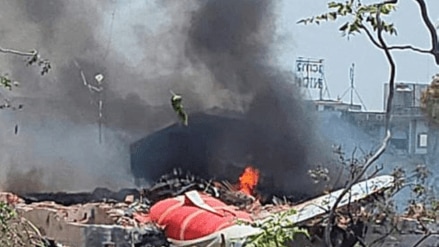The crash of Air India flight AI 171 is a national tragedy, marking one of the deadliest air disasters the country has seen. The sheer scale of devastation is numbing. As details continue to emerge, full clarity on what caused the crash will take time. Aviation investigations are meticulous by necessity. Yet, even as the due process unfolds, one conclusion demands attention—that safety in aviation, whether in engineering or operations, remains a non-negotiable frontier. It will not be wrong to say that the systems meant to enforce it have failed before, and the penalties for lapses have clearly not been able to act as a sufficient deterrent. The track record of both Boeing, the manufacturer of the aircraft, and Air India, the carrier, is troubling enough to raise serious questions. While no airline is without flaws, the evidence in Boeing’s case goes beyond unfortunate coincidences. And Air India, even under the Tata Group since 2022, has seen repeated penalties for compromising core aspects of airline safety and service.
The aircraft involved, a Boeing 787-8 Dreamliner, had flown nearly 8,000 cycles over 11 years, not abnormally old by international standards. Dreamliners were hailed as next-gen marvels when introduced in 2011, but the fleet has been dogged by a series of alarming technical faults over the years. Battery fires grounded the global fleet in 2013. Structural defects flagged by whistleblowers about manufacturing shortcuts like leaving structural gaps unfilled and even workers jumping on parts to force alignment sound unreal until one recalls Boeing’s broader pattern of quality control lapses, including two 737 Max disasters in 2018 and 2019, and the mid-air blowout of a Max 9 door plug in January 2024. Thursday’s crash now brings the Dreamliner into the centre of this mounting credibility crisis. The real damage lies in the erosion of public trust. Boeing has promised cooperation, but accountability, not public relations, is what’s needed.
On the Indian side, Air India has hardly distinguished itself. Since the Tata Group took over, the Directorate General of Civil Aviation (DGCA) has penalised the airline multiple times for violations ranging from safety equipment failures to operating flights with non-qualified crew. Each time, the fine amounts were ridiculously low—Rs 30 lakh here, Rs 1.1 crore there—surely not enough to act as a deterrent. In one tragic instance, a passenger died after being denied wheelchair assistance. For an airline, the brand’s identity being linked with safety is paramount, and Air India should work harder on that.
Thursday’s crash shows how such loose ends in safety oversight can, and do, culminate in disaster. Of course, India’s skies remain largely safe. The last major crash in India was in 2020. But that is no excuse for complacency, especially in a country where air traffic is growing faster than almost anywhere else in the world. Investigators from India’s Aircraft Accident Investigation Bureau (AAIB), Boeing, and the US Federal Aviation Administration (FAA) must get to the bottom of what went wrong, and the findings must lead to swift and visible change. That includes tighter rules for manufacturers and operators alike, and sharper punishments for violations that endanger lives. For far too long, both Boeing and Air India have been allowed to deflect criticism with statements and settlements. That must now end. This tragedy must serve as a turning point for how aviation safety is enforced.
